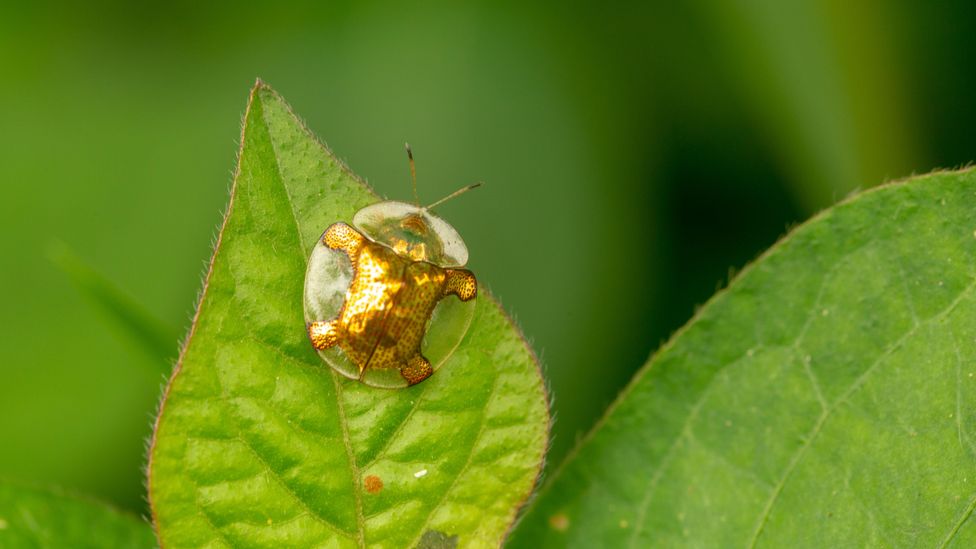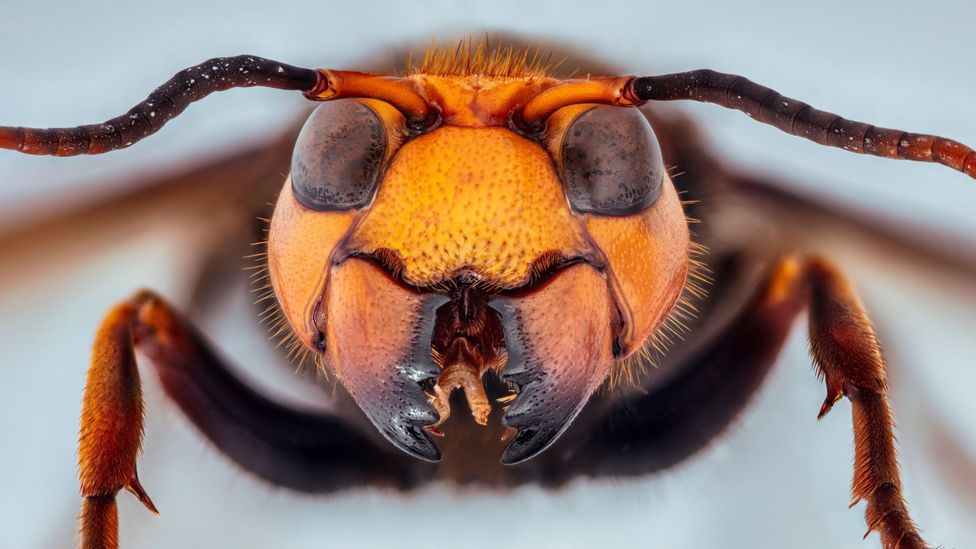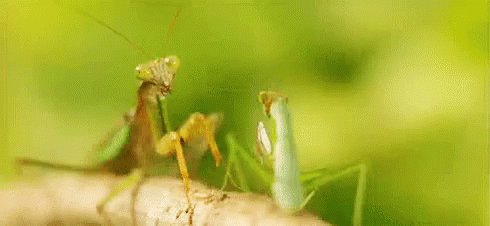Yes, insects can have attitude
Actually insects may actually be sensitive and emotional creatures
The following written content from Zaria Gorvett

For decades, the idea that insects have feelings was considered a heretical joke – but as the evidence piles up, scientists are rapidly reconsidering.
One balmy autumn day in 2014, David Reynolds stood up to speak at an important meeting. It was taking place in Chicago City Hall – a venue so grand, it’s embellished with marble stairways, 75ft (23m) classical columns, and vaulted ceilings.
As the person in charge of pest management in the city’s public buildings, among other things, Reynolds was there to discuss his annual budget. But soon after he began, an imposter appeared on one of the walls – a plump cockroach, with her glistening black body contrasting impressively with the white paint. As she brazenly sauntered along, it was as if she was mocking him.
“Commissioner, what is your annual budget for cockroach abatement?” one councillor interrupted, according to a report in The Chicago Tribune. Cue raucous laughter and a mad scramble to eradicate the six-legged prankster.
No one would question the cockroach’s impeccable, though accidental, comic timing. But the incident is partly funny because we think of insects as robotic, with barely more emotional depth than lumps of rock. A cockroach that’s capable of being amused or playful – well, that’s just plain absurd. Or is it?
In fact, there’s mounting evidence that insects can experience a remarkable range of feelings. They can be literally buzzing with delight at pleasant surprises, or sink into depression when bad things happen that are out of their control. They can be optimistic, cynical, or frightened, and respond to pain just like any mammal would. And though no one has yet identified a nostalgic mosquito, mortified ant, or sardonic cockroach, the apparent complexity of their feelings is growing every year.
When Scott Waddell, professor of neurobiology at the University of Oxford, first started working on emotions in fruit flies, he had a favourite running joke – “…that, you know, I wasn’t intending on studying ambition”, he says.
Fast-forward to today, and the concept of go-getting insects is not so outrageous as it once was. Waddell points out that some research has found that fruit flies do pay attention to what their peers are doing, and are able to learn from them. Meanwhile, the UK government recently recognised that their close evolutionary cousins – crabs and lobsters – as sentient, and proposed legislation that would ban people from boiling them alive.
So, how does one detect emotions in an insect? How can we tell they’re not just responding automatically? And if they really are sensitive creatures, should we treat them differently?

An evolutionary imperative
Insects are a jumbled group of six-legged invertebrate creatures with segmented bodies. There are more than a million different types, encompassing dragonflies, moths, weevils, bees, crickets, silverfish, praying mantis, mayflies, butterflies, and even head lice.
The earliest insects emerged at least 400 million years ago, long before dinosaurs took their first tentative plods. It’s thought our last common ancestor with them was a slug-like creature which lived around 200 million years before that, and they’ve been diversifying ever since. Initially they ruled over the land as giants – some dragonflies were sparrowhawk-sized, with 2.3ft (70cm) wingspans – before evolving into the extraordinary array of arthropods around today, from flies with fake scorpion tails to fuzzy moths that resemble winged poodles.
As a result, they’re strikingly similar to other animals, and yet vividly different. Insects have many of the same organs as humans – with hearts, brains, intestines and ovaries or testicles – but lack lungs and stomachs. And instead of being hooked up to a network of blood vessels, the contents of their bodies float in a kind of soup, which delivers food and carries away waste. The whole lot is then encased in a hard shell, the exoskeleton, which is made of chitin, the same material fungi use to build their bodies.

The architecture of their brains follows a similar pattern. Insects don’t have the exact same brain regions as vertebrates, but they do have areas that perform similar functions. For example, most learning and memory in insects relies on “mushroom bodies” – domed brain regions which have been compared to the cortex, the folded outer layer that’s largely responsible for human intelligence, including thought and consciousness.
(Tantalisingly, even insect larvae have mushroom bodies, and some of the neurons within them remain for their whole lives – so it’s been suggested that adult insects that went through this stage might be able to remember some things that happened before they metamorphosed.)
There’s mounting evidence that our parallel neural setups power a number of shared cognitive abilities, too. Bees can count up to four. Cockroaches have rich social lives, and form tribes that stick together and communicate. Ants can even pioneer new tools – they can select suitable objects from their environment and apply them to a task they’re trying to complete, like using sponges to carry honey back to their nest.
However, though insect brains have evolved down an uncannily familiar path to our own, there is one crucial difference: while human ones are so engorged they sap 20% of our energy and drove women to evolve wider hips, insects have compacted their wits into packages several million times smaller – fruit flies have brains the size of a poppy seed. How they’ve managed this is an enduring scientific mystery to this day.
So, even at first glance, it seems like insects would have the intellectual capacity for emotions. But does it make sense that they would have evolved them?
Emotions are mental sensations that are usually linked to an animal’s circumstances – they’re a kind of mental programme that, when it’s set off, can change the way we act. It’s thought that different emotions have emerged at different points in evolutionary history, but broadly they turned up to encourage us to behave in ways that will improve our ability to survive or reproduce, and ultimately, maximise our genetic legacy.
Geraldine Wright, a professor of entomology at the University of Oxford, gives the example of hunger, which is a state of mind that helps you to alter your decision-making in a way that’s appropriate, such as prioritising food-seeking behaviours. Other emotions can be equally motivating – rumblings of anger can focus our efforts on rectifying injustices, and constantly chasing happiness and contentment nudges us towards achievements that keep us alive.
All these things could also apply to insects. An earwig that’s thrilled when it finds a nice damp crevice filled with delectable rotting vegetation will be less likely to starve or dry out, just as one that panics and plays dead when it’s disturbed has a better chance of escaping the jaws of a predator.
“Let’s say you’re a bee that ends up in a spider web, and a spider is swiftly coming towards your across the web,” says Lars Chittka, who leads a research group that studies bee cognition at Queen Mary, University of London. “It’s not impossible that the escape responses are all triggered without any kind of emotions. But on the other hand, I find it hard to believe that this would happen without some form of fear,” he says.
A heretical idea
When Waddell first started his own research group in 2001, he had a fairly simple goal in mind. He wanted to find out if flies are better at recalling where to find food when they haven’t eaten for a while – i.e. when they might, if they could experience subjective moods, be feeling “hungry”. (It turns out they are, and they can.) Read more from BBC





